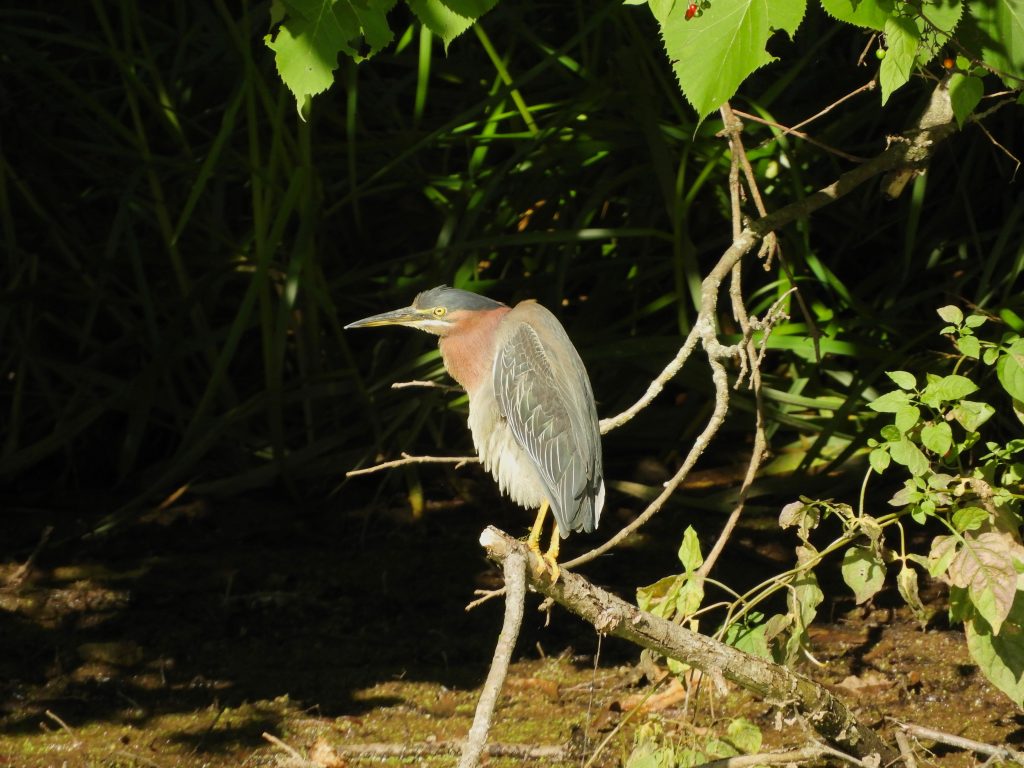
RBG. Hendrie Valley, Burlington ON. August 14 .2021. It was an Osprey morning in the valley, they quickly became my Birds of the Day. I had walked in early to see if there was any evidence of early migrant activity among songbirds, (there wasn’t) but local resident birds were active, a few still tending this year’s crop of young. I think that’s what was busying the Ospreys, there seemed to be one at every turn. Probably the fledglings from a nearby nest had been led there by their parents, an important part of their education in self-reliance conducted in a place with good fishing.
The young Ospreys, two I think, were stationed at safe waterside perches from where they called steadily, a resonant ‘cheep’ note that means ‘Here, hungry.’ I don’t know whether the parents brought them food, showed them where to hunt and how, or left it for them to figure it out, maybe a bit of each. On my way back to my car, quite a long way from any of those hungry youngsters, I watched this adult pull apart and eat a large Brown Bullhead (a locally common species in the catfish family), perhaps it needed on a bit of quiet time for itself.

People traffic was quite high too, the usual weekend effect, of course, and it was a bright, fresh morning in contrast to a long run of oppressively hot and humid days. I was lectured by one father figure who told me I was walking the wrong way along a trail; well, sooner or later I had to return the way I’d come so presumably that would put things right by him.

This Green Heron stood quietly beside one of the valley’s minor ponds now bright green under a carpet of Common Duckweed (Lemna minor). A small group of Mallards made vague open-water trails as they ate their way through the duckweed; clearly it is appropriately named. Last year I noted how hundreds of local or just-passing-through waterfowl cleaned up almost every last trace of it, fuel for their flight south.
It’s easy to understand how some might think the pond is covered in something repulsive, slime maybe; but duckweed is not slimy, the pond is just covered in what is almost the world’s smallest flowering plant. There must be millions if not billions of individual duckweed plants afloat on this little pond, each the size of a finishing nail or carpet tack. (The smallest plant honour goes to Wolfia, about the size of a candy sprinkle and a close relative to Lemna) With a bit of reading, I found that duckweed is frequently cultivated and harvested as protein-rich animal fodder, it can be used to remove heavy metals from polluted waters, and to recover nutrients from wastewater. There’s something new every day.

Love this post!
I especially really LOVE the opening photograph – the Osprey with backwards facing head – it is a stunning, crisp image!
Thanks for the info about duckweed as well , I had not realized how useful, beneficial snd nutrient rich it is!
Thank you for the duckweed information- it’s nice knowing it gives migrants a nourishing treat. As to the trail police, people can be stunningly self-righteous, even if they don’t know what they’re talking about.
Very interesting reading. Especially since a drainage pond in our area was always, in my thinking, slime covered. As duckweed and so nutrient rich and useful I will certainly look at it differently.
Thank you